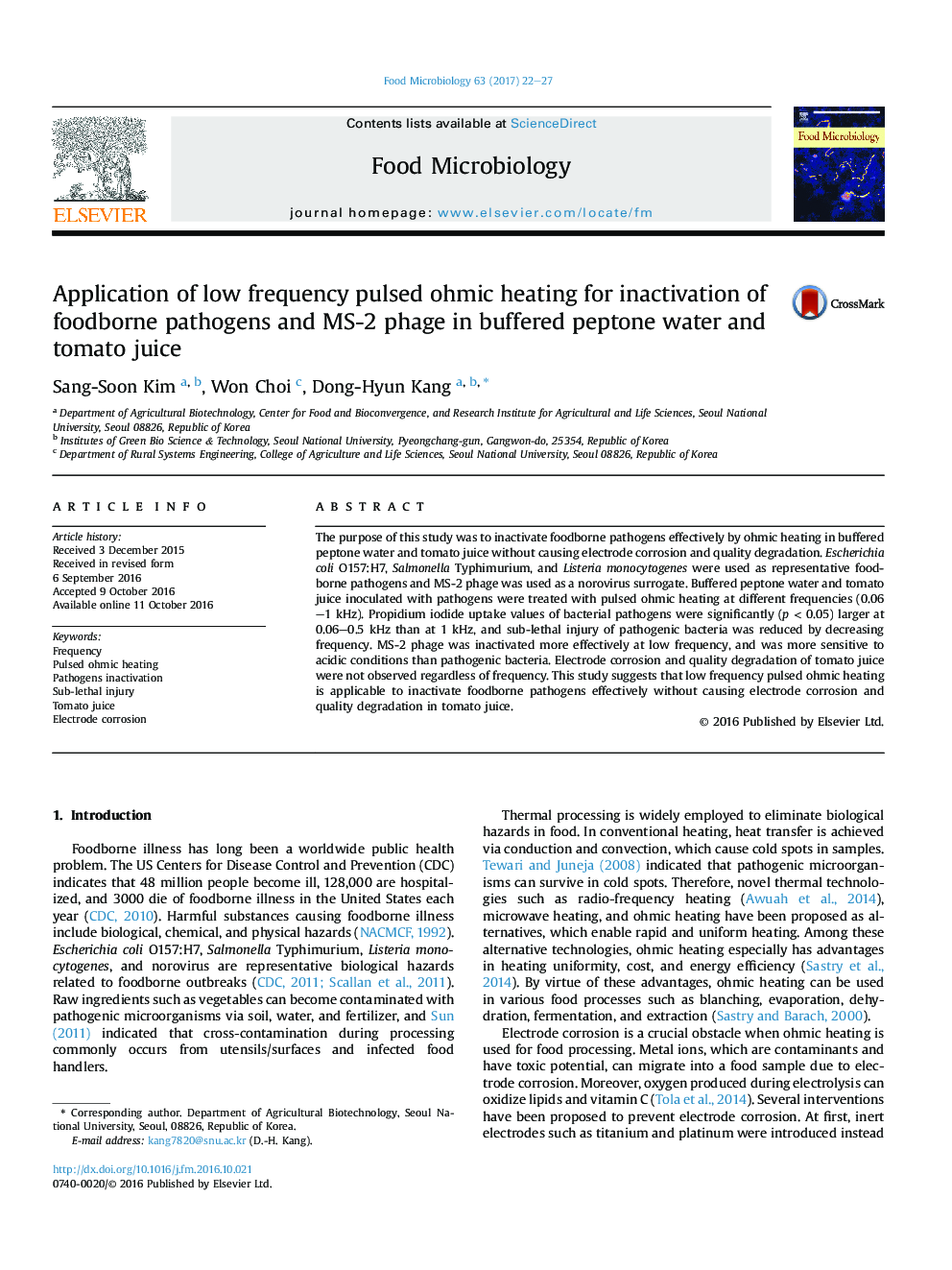| کد مقاله | کد نشریه | سال انتشار | مقاله انگلیسی | نسخه تمام متن |
|---|---|---|---|---|
| 5740166 | 1616238 | 2017 | 6 صفحه PDF | دانلود رایگان |

- Applicability of low frequency pulsed ohmic heating was identified for tomato juice.
- Propidium iodide uptake values were significantly high at lower frequencies.
- Resuscitation level of pathogenic bacteria increased as frequency increased.
- MS-2 phage were inactivated more effectively at lower frequencies.
- Electrode corrosion rate and quality aspects were not significantly different.
The purpose of this study was to inactivate foodborne pathogens effectively by ohmic heating in buffered peptone water and tomato juice without causing electrode corrosion and quality degradation. Escherichia coli O157:H7, Salmonella Typhimurium, and Listeria monocytogenes were used as representative foodborne pathogens and MS-2 phage was used as a norovirus surrogate. Buffered peptone water and tomato juice inoculated with pathogens were treated with pulsed ohmic heating at different frequencies (0.06-1 kHz). Propidium iodide uptake values of bacterial pathogens were significantly (p < 0.05) larger at 0.06-0.5 kHz than at 1 kHz, and sub-lethal injury of pathogenic bacteria was reduced by decreasing frequency. MS-2 phage was inactivated more effectively at low frequency, and was more sensitive to acidic conditions than pathogenic bacteria. Electrode corrosion and quality degradation of tomato juice were not observed regardless of frequency. This study suggests that low frequency pulsed ohmic heating is applicable to inactivate foodborne pathogens effectively without causing electrode corrosion and quality degradation in tomato juice.
Journal: Food Microbiology - Volume 63, May 2017, Pages 22-27